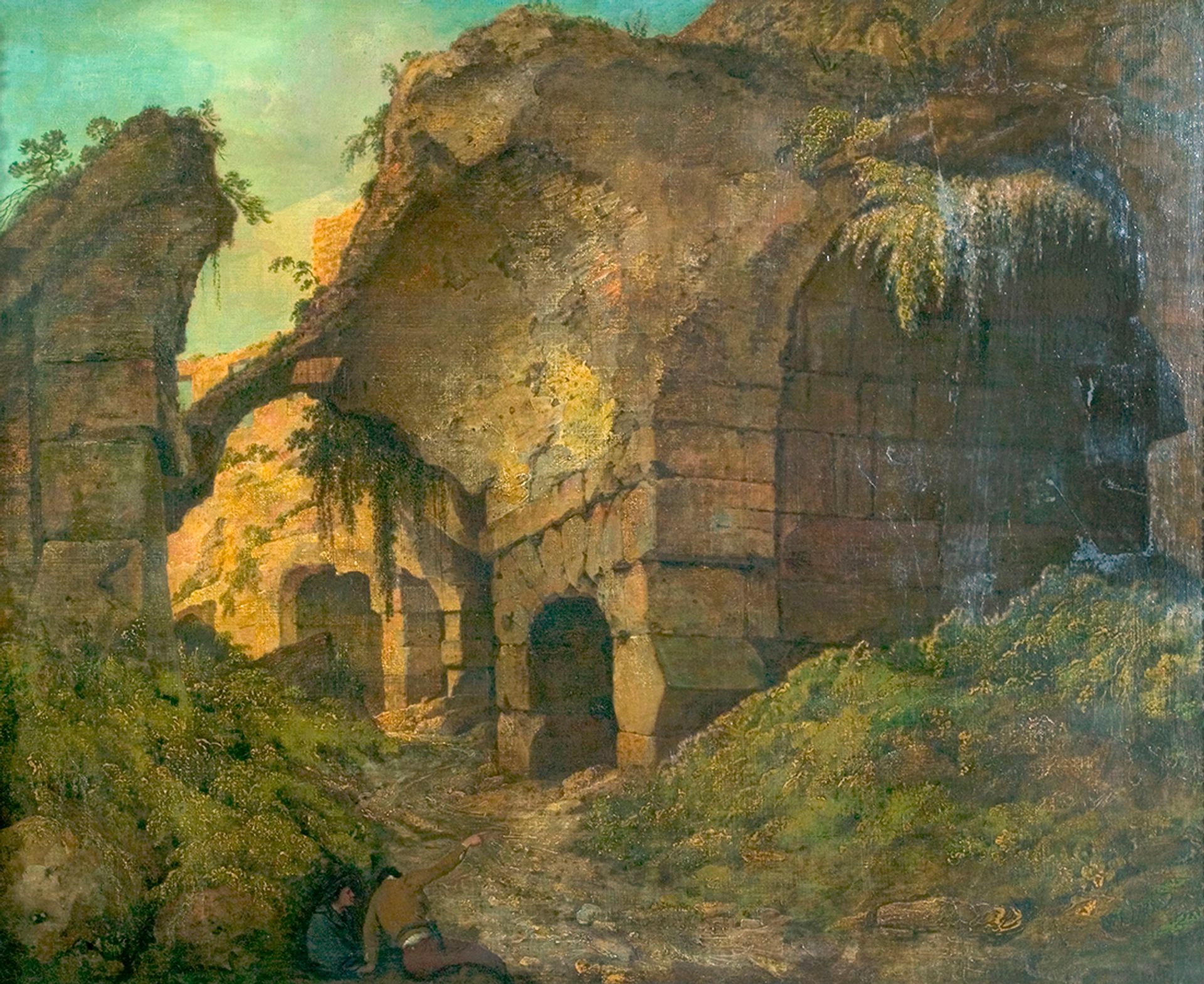Colosseum by Daylight and Colosseum by Moonlight, the last two surviving paintings of the ancient Roman amphitheatre by Joseph Wright of Derby (1734-97) will go on show for the first time in 56 years on Saturday 23 April, following their recent restoration funded by the Pilgrim Trust.
An earlier, poor intervention that masked much of the artist’s hand had made the pair unfit for display at the Derby Museum and Art Gallery in Derbyshire, which boasts the world’s largest public collection of works by Wright. Colosseum by Moonlight was so overpainted that it had been downgraded to a work by a follower of Wright. Following the restoration, Lucy Bamford, the museum’s senior curator of art, is confident that the canvas is by Wright.
Although Bamford says there was “around 70% of original material” in Colosseum by Daylight prior to its recent restoration and “the beautiful palette-knife impasto work and light made it really obvious that you were looking at a Wright”, an earlier attempt to repair a tear in the top right corner of the canvas by sewing in a piece of new canvas and painting over the area “was not very nicely done” so the piece was not displayed.

Colosseum by Moonlight, however, “looked nothing like Wright’s work”, Bamford says, estimating that “about 70%” of the composition prior to the treatment was not original. Three, thick layers of “slapped on” overpaint was removed to reveal “80% of Wright’s original composition underneath”. She says the retouching done during an early 1960s restoration did not correspond to Wright’s original composition. “In terms of retouching, the restorer went above and beyond [what was necessary].” Some of the overpaint could not be removed for fear of removing Wright’s original paint. Bamford says that it looks as if an attempt was made to clean the surface of the painting, which probably destabilised the original paint.
“It was never very clear before that you were looking at a moonlight scene because it was very warm in terms of tones. Now it’s an unequivocal moonlight scene,” she says.
Bamford now wonders what else may be lurking in the museum’s store. She recently rummaged through what she fondly calls the museum’s collection of “not quite Wrights” and spotted another overpainted canvas, an Italianate scene of an ancient bridge. “Looking closely, I noticed it has Wright’s trademark graffito technique to create ripples in the water,” she says. “If we had the resources, goodness only knows what we might find in there.”

